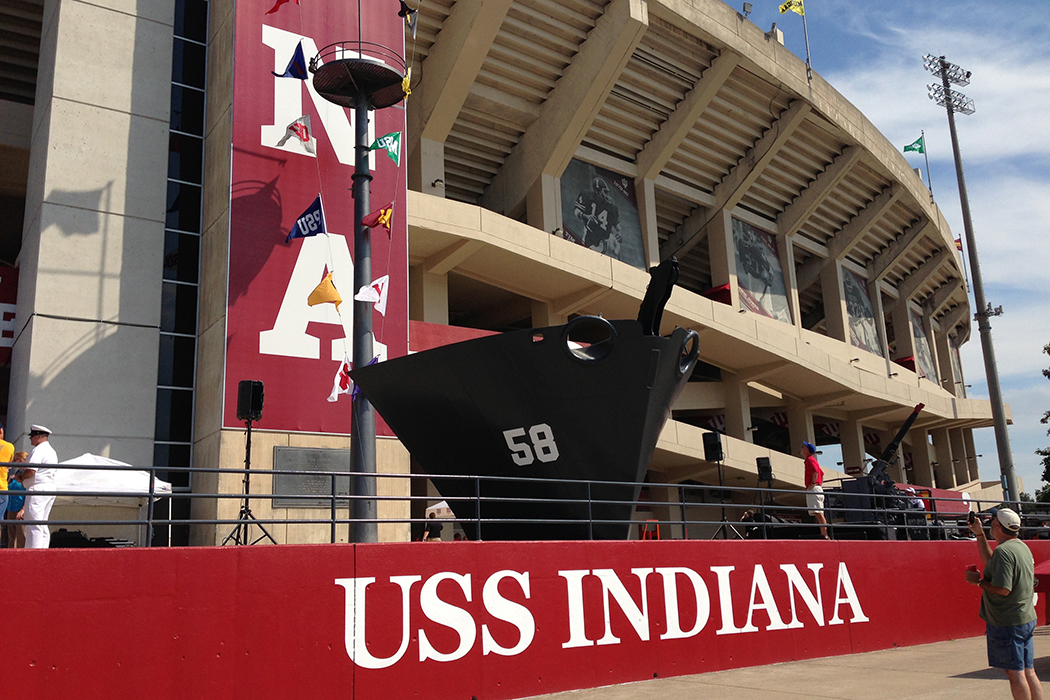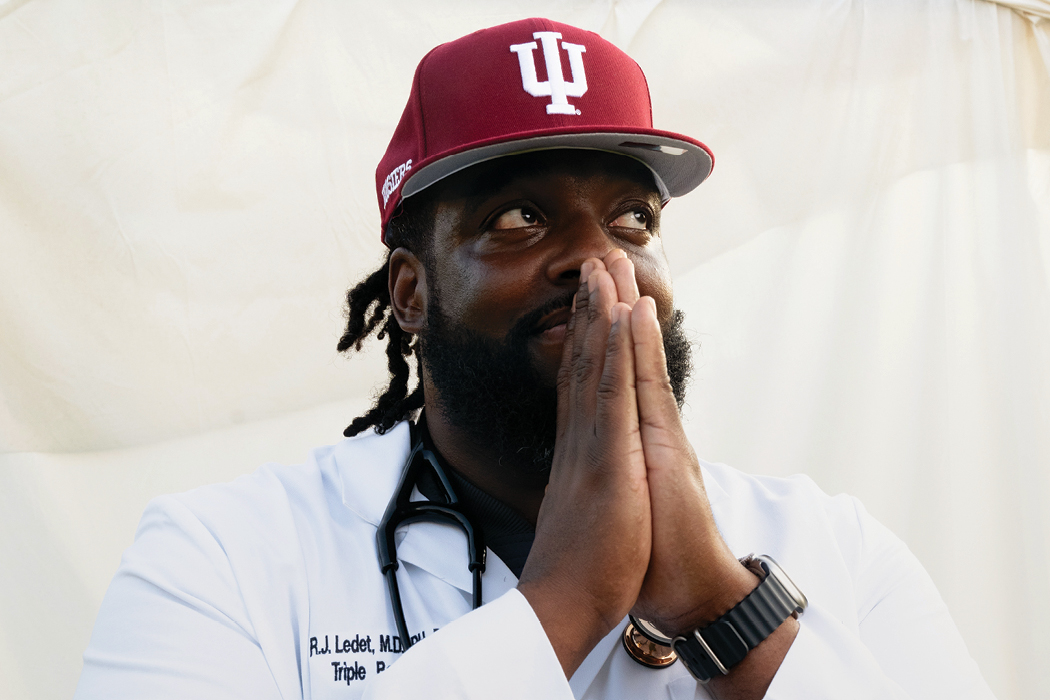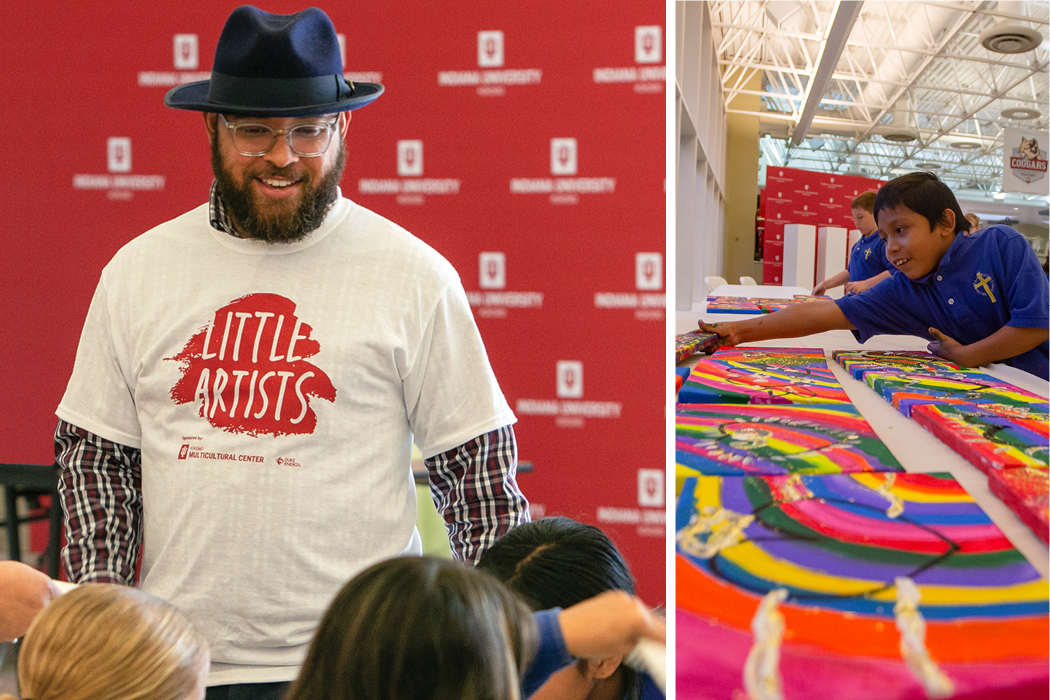Unwrapping the stories of IU’s most unique gifts

Say you’re strolling down Fourth Street in Berkeley, California. Something outside a seafood restaurant catches your eye. It’s a piece of a ship emblazoned “USS Indiana.” There in the parking lot, the prow of a former World War II naval ship now serves as a makeshift valet attendant stand.
If you’re an Indiana University alumnus and football fan, as Scott Clarke is, you see an opportunity.

“I write to you with an idea that could give a big boost for the university and our beleaguered/beloved football program,” Clarke suggested to IU in a letter to the editor published by the The Herald-Times in 2012.
“Bring her home,” he wrote, imploring the university to rescue the prow and bring it to Bloomington. There the prow would be reunited with the USS Indiana mainmast and gun mounts, which have been on display at IU football’s Memorial Stadium since 1966.

The restaurant owners generously agreed to donate the prow to the university. In 2013, it was refurbished, installed, and dedicated in a special ceremony honoring veterans.
That is the story of just one of the items in IU’s collections of more than 30 million objects. Each object has a story. And the hero in the story is often a generous person who gave the item to IU.
Some people leave their entire estates, homes, and all the personal items within, to the university. Such gifts of property, land, and objects large and small fall under the purview of the IU Foundation Real Estate and Personal Property team. It’s a team that rarely sees a dull moment.
On one day, they might be facilitating the arrival of Glenn Close’s costumes.
The next, they’re visiting property that is being sold in support of a $6 million gift for an investigative journalism center at IU.
On another, they’re working with IU’s Department of Spanish and Portuguese to authenticate a roughly 500-year-old scroll supposedly signed by King Ferdinand and Queen Isabella. (Turns out, it was legit.)

This team has to ponder some interesting questions.
Is IU willing to accept moon dust? Nope. The US government claims eminent domain on all samples of lunar rock, so accepting a private collector’s moon dust could’ve put IU between, well, a rock and a hard place.
Can you donate your body to IU for scientific research? Yes, but that’s handled by the IU School of Medicine.
What if someone donates a home that’s located in a nudist colony? You keep your clothes on and you process the estate with the same respect and care you would any other property.

The things that people donate to IU are as wide-ranging as the university itself.
Pianos, paintings, photographs, pipe organs . . .
Corvettes, kilts, handwritten letters, locks of hair, historic sewing tools . . .
The list could go on and on and on.

No matter what it is, each of these precious, often personal, gifts is thoughtfully stewarded. Some items are sold; others will become part of the permanent collections of various IU programs and centers. Whichever the case may be, considering how to maximize each donor’s generous gift to Indiana University is the IU Foundation’s utmost concern.
Tags from the story
Written By
Andrea Alumbaugh
A native Hoosier, Andrea Alumbaugh is a graduate of IU (BAJ’08) and a senior writer at the IU Foundation.



